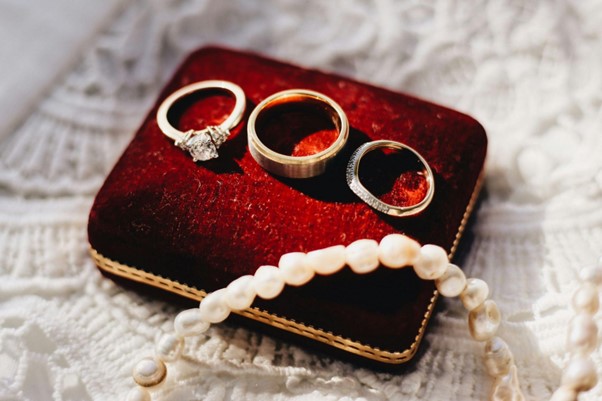Jewellery Thefts in the UK: How to Protect Your Valuables
Posted on: 25/04/2025
Jewellery holds more than just
financial value — it can be deeply sentimental, passed down through generations
or tied to cherished memories. Sadly, jewellery is also a common target for
thieves, and with the rising value of gold and precious stones, thefts have
become an increasing concern across the UK.
But it’s not all doom and
gloom, as there are some very simple ways you can protect your most precious
pieces from thieves. Here, Chapelle looks at the facts of jewellery thefts,
where they’re most likely to occur, and how you can protect, insure, and recover
your valuables should the worst happen.
UK jewellery theft
trends
Jewellery theft has been steadily rising in recent years
(Aviva). According to police data and crime reports, there has been a
noticeable year-on-year increase in thefts from homes (ADT), with almost one in
every three home break-ins in England and Wales reporting a jewellery or watch
theft. Opportunistic thefts like robberies — including muggings — make up a
growing proportion of overall reported crimes with a 4% increase from last year
(ONS).
The soaring price of gold is a
key factor. In the last year alone, gold has seen a significant rise in value,
meaning items that may have once been considered modest are now worth far more
(gold.co.uk). Unfortunately, many people are unaware of just how much their
jewellery is now worth — and as a result, are underinsured.
Is my jewellery at
risk?
While any jewellery can be
stolen, certain items are especially attractive to thieves:
●
Gold chains and bracelets — Easy to carry, hard to
trace, and quickly resold.
●
Luxury watches — Brands like Rolex, Cartier, and
Audemars Piguet are top targets.
●
Designer jewellery can often carry a premium on the
resale market.
Another high risk category is
wedding and engagement rings. For many people, their wedding or engagement ring
is the highest value piece they own, and as they tend to be worn every day,
they can be an easy target for thieves.
Jewellery theft
hotspots
Regional crime data suggests
there are certain areas in the UK where jewellery theft is more common.
Unsurprisingly, thefts tend to be higher in major urban areas with greater foot
traffic and wealth concentration. Tourist-heavy areas are more prone to pickpocketing
and bag snatches, where jewellery is often taken along with handbags or phones.
●
London continues to top the list for jewellery and
watch thefts, particularly in affluent boroughs such as Kensington and Chelsea, Westminster, and Camden.
●
Birmingham, Manchester, and Leeds have also
seen higher-than-average incidents, especially in city centre locations and
affluent suburbs.
●
Low income areas like Middlesbrough and Doncaster are also at high
risk, particularly from home burglaries (ADT).
That said, no area is immune.
Theft can happen anywhere, and it’s often the lack of adequate security —
rather than location — that determines whether a home or individual is
targeted.
Securing your
jewellery: Simple steps to reduce risk
Don’t worry, you don’t need to
hire a 24 hour security team to keep your valuables safe — just some smart
habits and simple adjustments around the home.
Store your
jewellery properly
Remember to keep precious items
out of sight. Never leave jewellery on show near windows or entrances, as
thieves often ‘window shop’ when casing houses. The same goes for social media
— it might be tempting to post that new engagement ring or share your holiday
snaps, but thieves do monitor online activity. So, avoid advertising your
absence or flaunting your valuables unless you have a private account.
If you can, try not to keep all
your jewellery in the same place. Store everyday pieces in one location and
keep heirlooms or high-value items hidden elsewhere. A locked box in an airing
cupboard or disguised in an old shoebox in the loft can work surprisingly well,
or you may find it helpful to invest in a safe.
Have the right
insurance
Many people assume their
standard home insurance will cover jewellery — but this often isn’t the case
for high value items unless they are specifically declared and valued.
Jewellery should be professionally valued every few years to reflect rising
gold and gem prices. Always ask for a valuation document and keep digital
copies of it.
Then, check your policy limits.
Most home insurance policies have a single-item limit (often between
£1,000–£2,500). If your item is worth more, you’ll need to list it separately
on your policy. For high-value collections or frequently worn items like
engagement rings, specialist jewellery insurance may offer better protection,
including worldwide cover and accidental damage.
Always keep proof of ownership.
Take high-quality digital photographs of each piece of jewellery and store them
— along with receipts and valuations — in a secure cloud-based storage system.
This is to avoid relying solely on a home computer or laptop, as these can also
be stolen if you experience a break-in.
What to do if your
jewellery is stolen
If the worst happens and your
jewellery is stolen, there are ways to make the claims process and recovery
efforts easier. Report the theft to the police immediately and obtain a crime
reference number, then notify your insurer as soon as possible and provide as
much documentation as you can — be sure to include photos, receipts,
valuations, and a list of stolen items.
Monitor resale sites such as
eBay, Facebook Marketplace, or local pawn shops. Thieves often look for a quick
turnaround and may use these avenues to offload stolen jewellery quickly. You
can also try asking jewellers to be on the lookout, as local shops may be
willing to help if you can provide a clear photo and description. Some
insurance policies include access to recovery services or jewellery tracing
networks, so it’s worth checking what’s available on your plan too.
